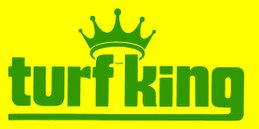This photo shows a lawn with an east-west fence. The fence provides shade along the lawn that is to the north of the fence. That area will rarely get much sun, except early or late in the day. Most of the day, then, that part of the lawn in shaded by the fence.
The lawn beyond the shade of the fence is infested with chinch bugs. Notice how they have stayed away from the shady strip of lawn.
How can this information help you? A little bit of shade will decrease your chances of getting chinch bugs. Patio umbrellas, anyone?
But one sure way to help is to make sure you mow the lawn nice and high. We recommend a mowing height of 3 inches. That little bit extra length of grass blade that you leave behind, may be just enough to discourage the chinch bugs from attacking your lawn. The longer length provides more shade. The extra shade keeps the lawn soil surface a touch cooler.
It may not work completely in every case, but I am sure that by mowing long, your risk of your grass getting chinch bugs is going to be less than if you cut the lawn short.
www.hamiltonturfking.ca









